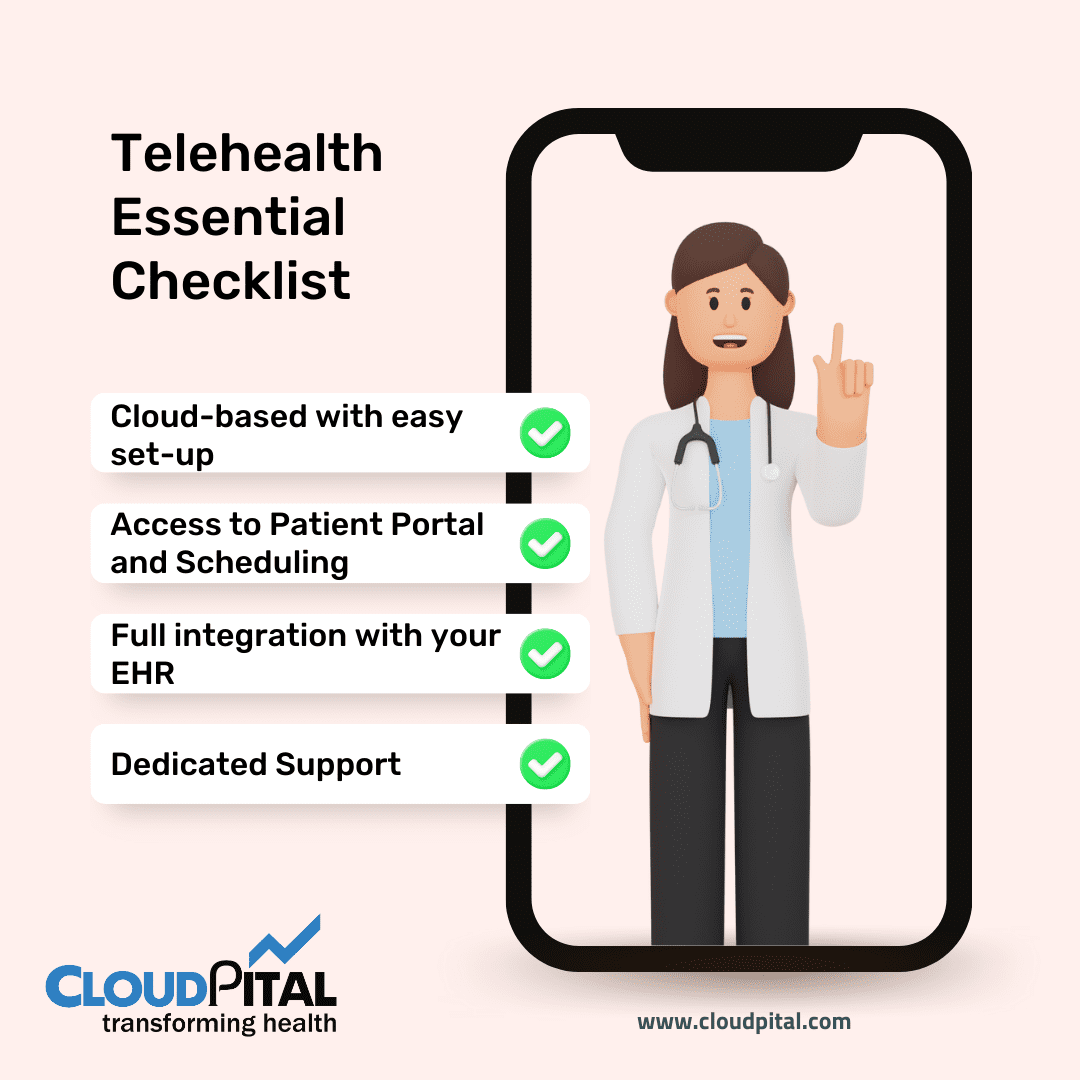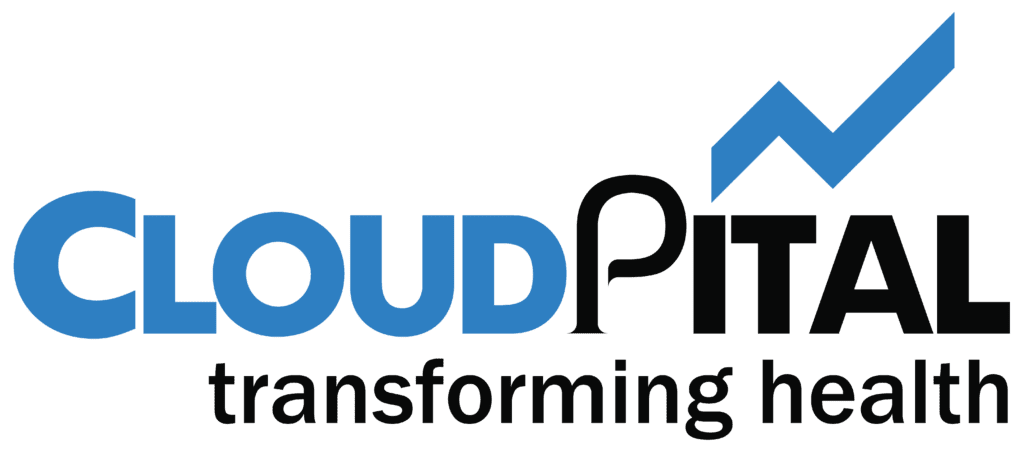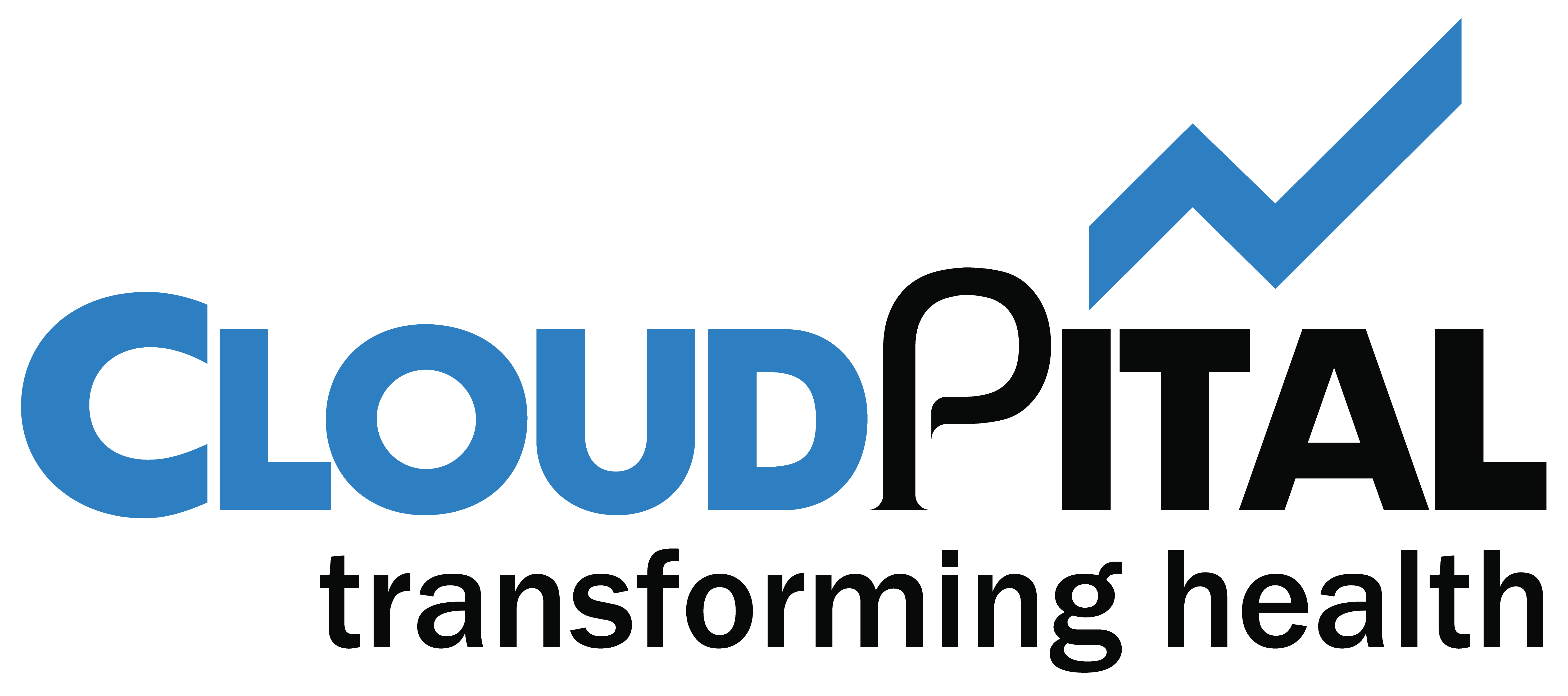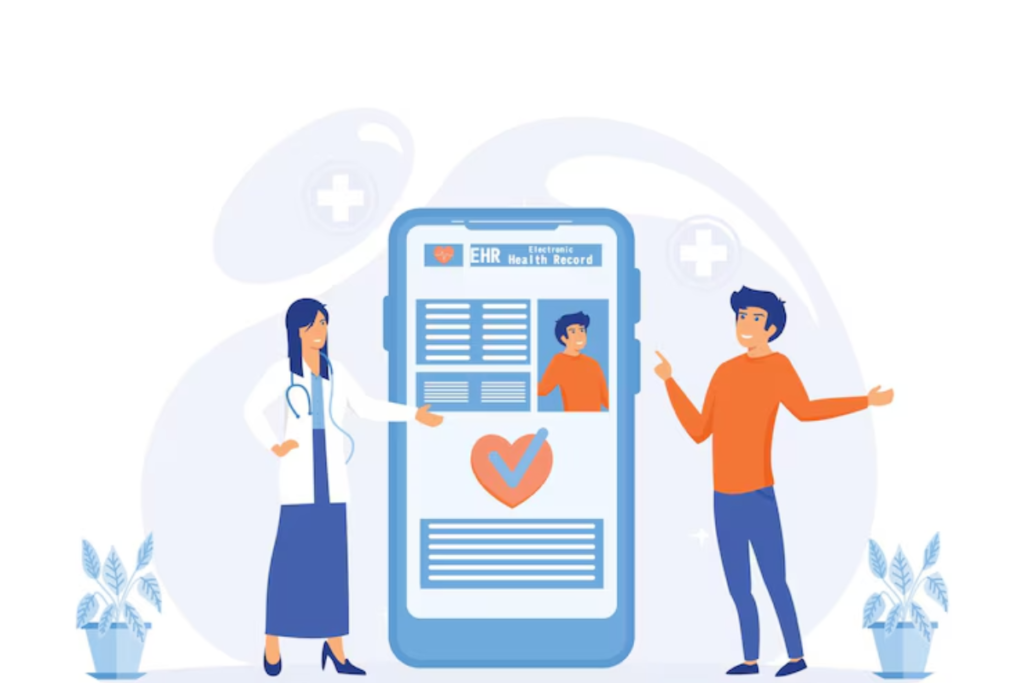Cloudpital # 1 is one of the top PMS there has been a great need for medical practitioners to make Practice Management Systems alongside Electronic Health Records a significant innovation in improving operational effectiveness and patient care. PMS helps reduce administration, such as scheduling, billing, and reporting, while EHR has to do more with clinical information: patient health records, diagnoses, and treatment plans. The two systems’ integration provides a holistic solution to health care organizations, thus allowing them to achieve a smooth workflow and improved patient outcomes with a higher degree of data accuracy.
Cloudpital # 1 PMS

This paper outlines the need for PMS and EHR integration, its benefits to healthcare practices, and steps taken in ensuring that integration is fruitful.
Understanding Practice Management Systems (PMS)
A PMS is a software application that automates many of the routine functions of a medical care practice. It assists healthcare providers in running the administrative and financial affairs of the health facility, including;
Scheduling: Managing the appointments of the patients in such a manner that time of the clinical staff is optimized for their use.
Billing and Claims Processing: Automation of processes relating to billing, insurance claims, and payment tracking.
Patient Registration: Handling the record of demographic data of the patients, their insurance information, and their consent forms.
Report: The ability of PMS to generate reports on financial performance, patient flow, and practice management metrics
PMS lowers administrative burdens of a healthcare practice that minimizes paperwork and ensures smooth running of operations, thereby able to focus more on patient care.
What are Electronic Health Records (EHRs)?
Electronic Health Records (EHR) is the digital version of a patient’s medical history designed to be accessed and shared between different healthcare settings. It contains all relevant medical data such as;
- Patient demographics
- Medical history
- Medications and allergies
- Lab test results
- Radiology images
- Treatment plans and progress notes
EHR systems are bound to enhance communication among healthcare providers. Besides, these systems ensure timely sharing of critical information that a patient may require for proper care, thus enhancing coordinated care and safety while treating patients.
The Call to Integrate PMS and EHR
While the PMS and the EHR system have their utility in the treatment area, they complement each other in healthcare. A number of benefits emerge when the two systems are integrated together, including the following:
Efficient Workflow: Interconnected processes such as patient registration, scheduling appointments, and billing can be automated. In this way, healthcare staff will not need to transfer from one system to another, which eliminates redundancies and errors.
Integrated Patient Records: In case PMS and EHR become integrated, a single record is formed where all clinical and administrative data is integrated. And with this united record, healthcare providers become better equipped to make informed decisions since all clinical and administrative information about a patient is integrated into a single patient record at all times.
Communication will be much better: Integration will greatly enhance communication between the administrative and clinical staffs. For instance, when a new appointment is created in the PMS, its details must be automatically updated in the EHR system, and the clinicians should be notified about the visit.
Streamline Billing Process: As PMS involves dealing with the administrative side of patient visits, it will ensure that all treatments and services are documented by incorporating the EHR. Reduced Delay with Improved Revenue Cycle Management in Billing and Claims Processes.
Administrative Error Minimization: With PMS and EHR integration, the process of double data entry is completely eliminated, so this minimizes the possibility of human error. Thus, all data within the system is precise and consistent.

Key Benefits of PMS and EHR Integration
There are several key benefits that PMS and EHR integration offers for more efficient healthcare practices:
Enhanced Patient Experience
Patients would be able to have a much more fluid experience with Nphies EMR in Saudi Arabia EHR integration. No longer would they need to recite the same information to everybody in the practice because data is transferred automatically between the administrative side and the clinical side. Furthermore, it would also expedite the services for billing and allow them to access their medical records more easily via patient portals.
Care Coordination
Integration allows for better coordination among those departments and specialists treating a patient. Since one patient record will include every piece of information required about that patient, healthcare providers will be more likely to have correct information available when making any decisions for that patient. Also, through integration, patients’ health tests would be repeated fewer times, and medical errors might also be avoided.
Reporting and Analytics
When PMS and EHR systems are integrated, practices can produce reports far more robust that combine clinical and administrative data. Through this, there would be better understanding in terms of practices’ performance, output from patient care, and other financial metrics. In addition to this, health care organizations can track key performance indicators to closely monitor and improve overall operational efficiency .nd) Compliance and
Regulatory Support
This PMS-EHR integration allows the healthcare organizations to maintain their adherence with the regulatory requirements, such as HIPAA and Meaningful Use guidelines. Since the system can integrate clinical and financial data, the necessary reports and documentation for audits or government programs can be easily generated .
Cost Savings
Administrative tasks are streamlined and overhead reduced by eliminating redundant manual data entry. Additionally, proper revenue cycle management incurs faster claims processing and less billing error so that the healthcare organizations get paid in a more timely and accurate manner.
Steps towards Successful PMS and EHR Integration
To ensure successful integration between PMS and EHR, healthcare organizations must take the following steps:
Evaluate Current Systems
Assess current systems before introducing the integration. This should include knowledge of the functionalities of PMS and EHR systems and what gaps or inefficiencies exist at the current workflow level. It is also essential to ensure that these two systems support each other in all manners compatible with an uncomplicated integration.
Identify Best Integration Method
There are various methods through which one might integrate the functionalities of PMS into those of EHR. These include:
Point-to-Point Integration: This connects the two systems by an application programming interface. Even though it is a very efficient type of integration, adding many systems can make scalability challenging.
Middleware-based Integration: This is a third-party solution that serves as a bridge connecting the PMS and EHR. These middleware solutions often facilitate making integration easier while offering much flexibility for future upgrades in terms of an easy upgrade of the systems if any changes occur.
Data Mapping and Standardization
The mapping of the fields in both data systems should be done, and also standardizing data formats that have been in use in both the two systems. This includes demographic aspects of the patients, details of appointments, billing information, as well as clinical data. Consistency with the structure of data is very important in ensuring data accuracy while integrating.
Implementation and Testing of Integration
Introduce integration in stages after the integration method has been chosen and mapping data is comprehensive. It would be best to begin by integrating a couple of the most important functions, like appointment scheduling and billing. In this regard, step-up the more complicated tasks and ensure they are integrated too. The implementation phase should come under stringent testing in order to discover problems or errors that may come up.
Staff Training and Performance Monitoring
After the go-live implementation, the staff training will be critical. The staff must learn how to use a new system. To this effect, all the staff in both clinical and administrative domains who use the PMS and EHR system are necessary. Moreover, the performance should also be tracked when the system is first implemented so that any issue can be detected and changed accordingly.
Issues of PMS-EHR Implementation
Although there are quite a number of advantages of PMS-EHR integration, there are also several key challenges that the health care organizations might face:
Implementation Cost: The integration of PMS and EHR systems can be costly to the organizations, especially the smaller health care practice. It also includes the training of the employees and the recurring system maintenance.
Data Security and Privacy: Since patient data flows into different systems, the necessity to ensure data security and privacy of sensitive information is critical. Integration calls for health care organizations to have assurance that the varied systems fulfil compliance with data protection regulatory requirements, such as HIPAA.
System Compatibility: Often, Hospital Software in Saudi Arabia and EHR systems cannot interlink because not all are compatible with each other. Under certain circumstances, customizations may be required to make the flow of data between various systems be smooth.
User Resistance: Staff will be resistant to any new systems or workflow, and in this case, introducing a new workflow in one system that addresses both functionalities of the former PMS and EHR. Full training and support with detailed steps on how to handle procedures will be needed to break resistance to successfully implement a new system.
Conclusion
The integration of PMS and EHR becomes the ultimate move for healthcare providers that enables them to channel all practice activities, improve patient care, and enhance financial performance. One would soon come to realize that the long-term benefits are much more significant than those in their integration stage; hence, by doing so, it can help healthcare practices effectively ensure the best coordination of care, less administrative burdens, and better patient outcomes.
The future of health care will continue to take shape through the use of combined PMS and EHR elements in order to gain efficient, high-tech care and patient-centered medicine.
Click to Start Whatsapp Chatbot with Sales
Mobile: +966502737333
Email: sales@cloudpital.com
You can explore our other blogs
Hospital Software in Saudi Arabia, EMR Systems, PMS
How does PMS integrate with Electronic Health Records (EHR)? similar software solutions prices were updated on 2025-12-19T20:38:34+00:00 in Saudi Arabia in Mecca, Medina, Riyadh, Khamis Mushait, Yanbu, Jeddah, Dammam, Unaizah, Uqair, Ha’il, Ta if, Al Bahah, Dhahran, King Abdullah Economic City, Najran, Diriyah, Qatif, Khafji, Jubail, Abqaiq, List of Cities and Towns in Saudi Arabia, Ras Tanura, Turubah, Jazan Economic City, Knowledge Economic City, Medina, Khobar, Abha, Tabuk, Saudi Arabia, similar software solutions prices were updated on 2025-12-19T20:38:34+00:00 We also provide in Saudi Arabia services solutions company in Hafar Al-Batin, Udhailiyah, Al-Awamiyah, Hofuf, Hautat Sudair, Buraidah, Tayma, Duba, ‘uyayna, Saihat, Al-Kharj, Al-ula, Jizan, Rumailah, Ar Rass, Arar, Shaybah, Al Majma’ah, Rabigh, Dhurma, Haradh, List of Saudi Cities by Gdp Per Capita, Badr, Sudair Industrial City, Baljurashi, Shaqraa, Al-Khutt, Habala, Ad Dawadimi, Dawadmi, Layla, similar software solutions prices were updated on 2025-12-19T20:38:34+00:00 Price is SAR 100 and this was updated on updated on 2025-12-19T20:38:34+00:00 similar How does PMS integrate with Electronic Health Records (EHR)? software solutions prices were updated on 2025-12-19T20:38:34+00:00 in Saudi Arabia in Haql, Afif, Al-Abwa, Farasan, Al-Jaroudiya, Thadig, Al-Thuqbah, Al Wajh, Almardmah, Al-Zilfi, Muzahmiyya, Prince Abdul Aziz Bin Mousaed Economic City, Tharmada’a, Skaka, Um Al-Sahek, Sharurah, Tanomah, Bisha, Dahaban, Al Qunfudhah, Qurayyat, Saudi Arabia, Ha’ir, as Sulayyil, Al Lith, Turaif, Al-Gway’iyyah, Samtah, Wadi Ad-Dawasir, Az Zaimah, Safwa City, Jalajil, Harmah, Mastoorah, Hotat Bani Tamim, Jabal Umm Al Ru’us, Rafha, Qaisumah, Al-Ghat, Hajrah, Al-Hareeq. Excerpt: Jeddah (also spelled Jiddah, Jidda, or Jedda; Arabic: Jidda) is a Saudi Arabian city located on the coast of the Red Sea and is the major urban center of western Saudi Arabia similar software solutions prices were updated on 2025-12-19T20:38:34+00:00 Price is SAR 100 and this was updated on updated on 2025-12-19T20:38:34+00:00
10-21-2024




